Basic Power Supply Theory And Repair
Do you have an electronic tool kit? Are you skilled with a soldering iron? Can you operate a multimeter? And are you interested in learning more about Basic Power Supply Theory And Repair? Then read on!
Now that you have all the aforementioned stuff, you’re probably anxious to tear into that piece of audio gear badly in need of repair. But hold on a second! For the safety of yourself and your broken equipment, it’s best to take a few precautions.
The Electronic Workbench
First, your workbench area should be cleared of clutter and other extraneous junk. Next, make sure you’re  working on a non-conductive surface like wood, carpet, etc. It’s also helpful to have your test equipment, meters, and scopes on a shelf above the bench for ease of viewing and general neatness. It’s also very helpful to track down a schematic for your device to be repaired.
working on a non-conductive surface like wood, carpet, etc. It’s also helpful to have your test equipment, meters, and scopes on a shelf above the bench for ease of viewing and general neatness. It’s also very helpful to track down a schematic for your device to be repaired.
Safety first! Unplug the device to be repaired from the wall current before attempting to open it up!
Once open, your first task will be locating the power supply section. It can usually be found near the area where the power cord enters the chassis. It might also be near the on-off switch or fuse. The typical basic power supply is easy to spot because of its proximity to the power transformer, large electrolytic filter capacitors, and bridge rectifiers. I’ll talk about each of these circuit elements in detail.
Basic Power Supply Theory And Repair
Discharge Those Caps!
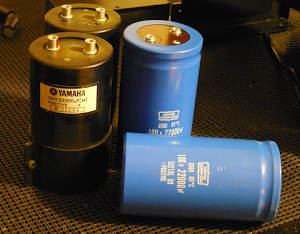
WARNING! The power supply area represents a dangerous shock hazard, so stay away from this area with your test leads, etc., until you have discharged the large electrolytic filter caps!
Cap discharging can be done by using a test lead and a screwdriver with an insulated handle. Simply clip one end of the test lead to the screwdriver shaft and the other end of the test lead to one of the screws or terminals on one filter cap. Now touch the tip of the screwdriver on the other terminal on the filter cap, which will short the cap and discharge it with a slight spark. Repeat this procedure for each power supply electrolytic filter capacitor.
Step One: The Transformer
Now that your electrolytic capacitors have all been discharged, let’s check out some power supply basics.
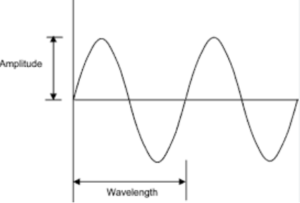
Most electronic circuits run on DC (direct current). However, AC (alternating current) is what flows out of the wall socket. After the AC leaves the wall socket it flows through the power cord, AC switch, and then through a fuse or circuit breaker.
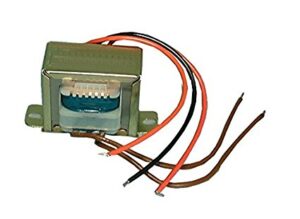
AC current then arrives at the power transformer. Through inductance, the transformer supplies the approximate voltages that the circuit will require via its multiple taps or outputs. However, the voltage outputs of the transformer are still AC.
Basic Power Supply Theory And Repair
Step Two: The Bridge Rectifier
Dealing with the transformer’s AC output is where the bridge rectifier comes in. The bridge rectifier is a configuration of four diodes that converts the incoming AC to pulsating DC as shown below. Note how the DC waveforms are now all flipped above the 0 volt line as compared to the AC sine waveform above.
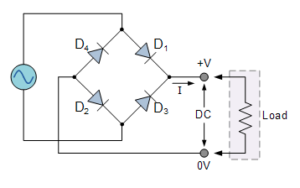
Depending on the power needs of your device, there could be several bridge rectifiers in the power supply section. These can become “shorted” (blown fuses) or even can become “open” which would likely leave your device un-powered.
You can learn how to test bridge rectifiers here:
Once you know the bridge rectifier aspect of the power supply is functioning properly, it’s time to  understand what filter capacitors do.
understand what filter capacitors do.
Basic Power Supply Theory And Repair
Step Three: Filter Caps Smooth Out The Ripple
The pulses in the “raw” DC are called ripple, which can result in power supply hum. The smoothing of this ripple is the job of the filter capacitors. These caps are typically large electrolytic “cans.”  Some power supplies also feature voltage regulators and voltage trackers and many other circuit variations to provide for bi-polar supplies, etc. Again, power supplies present a shock hazard, so unplug the unit, discharge the filter caps as detailed above before replacing any components or measuring their respective values.
Some power supplies also feature voltage regulators and voltage trackers and many other circuit variations to provide for bi-polar supplies, etc. Again, power supplies present a shock hazard, so unplug the unit, discharge the filter caps as detailed above before replacing any components or measuring their respective values.
Electrolytic caps typically dry out over time. They can become leaky, open, or even shorted. If you find faulty electrolytics in your power supply, it’s best to replace them all at the same time. Many replacement caps can be sourced at mouser.com. Find a replacement cap with your voltage rating or above, and a similar size and mounting method. For example axial, or radial mounting styles. Finally, always observe proper polarization when installing electrolytic capacitors!
You can learn how to test electrolytic filter capacitors here:
And you can learn about testing voltage regulators here:
Knowing Power Supply Basic Aids Troublshooting
Understanding and verifying the operation of power transformers, bridge rectifiers, and filter caps of your basic power supply will in many cases, allow you to return the device into operation.
Modern digital circuitry and compact device designs more often call for switching power supplies. These circuits are also called switch mode power supplies. This type of power supply design is vastly more complex, and therefor beyond the scope of this writing. However many audio devices are still powered by basic power supplies and their more simple designs.
Learn More About Multimeters at Tools Critic


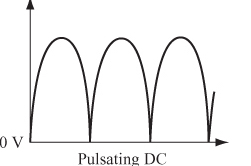
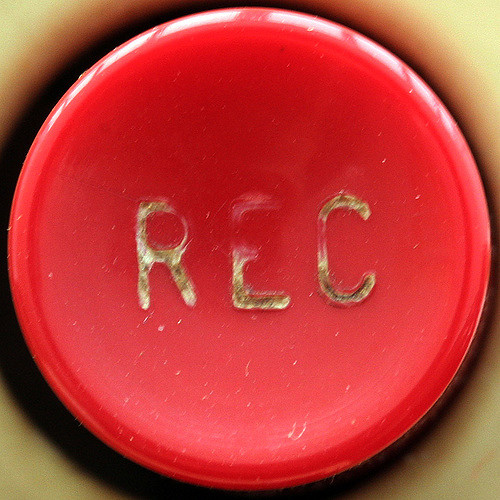

2 thoughts on “Basic Power Supply Theory And Repair”
great article , i m passionate about this subject
That’s a great introduction to Basic Power Supply Theory Mike., your expertise in this area really shines through.
For those looking for the basics on how to use a multimeter, we also published an informative guide at https://toolscritic.com/best-multimeter/ which complements the article nicely.
Thanks,
Mark